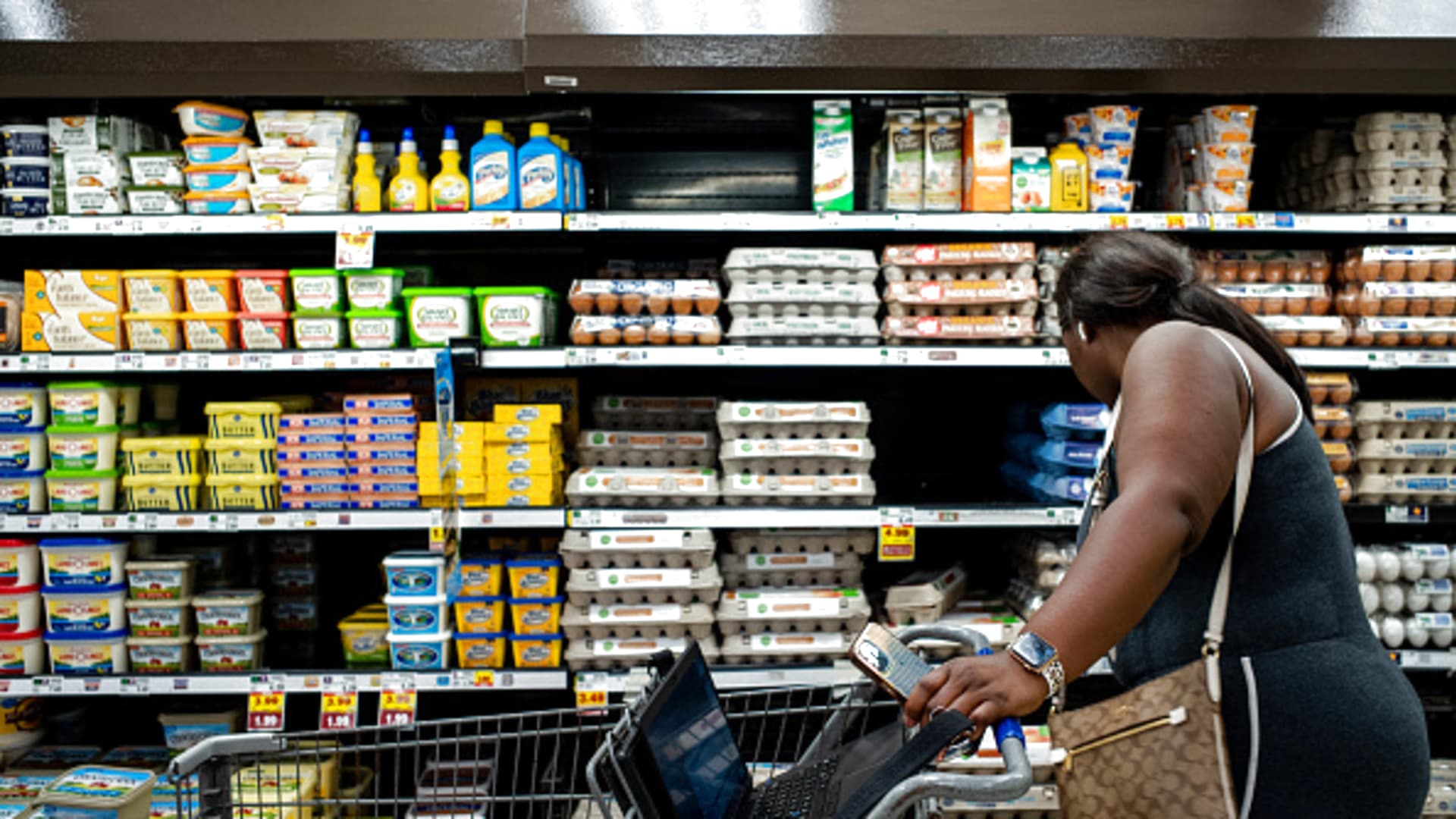
Kroger knows it needs the blessing of investors and federal regulators to pull off its $24.6 billion deal to buy rival grocery company Albertsons.
It started making its case Friday, when the companies announced the deal. Kroger said the combination would lower food prices in a time of high inflation, boost profitability and speed up innovation in an otherwise fragmented industry.
If approved, the grocers would become a more formidable second place in terms of grocery market share behind Walmart. Together, the companies would capture nearly 16% of the U.S. grocery market, according to market researcher Numerator. Walmart had roughly 21% of the market as of June 30. Albertsons is fourth place. Kroger said it anticipates closing the deal in early 2024, pending regulatory approval.
Significant hurdles remain: Some investors question whether the merged companies can increase profits since the grocery business, already known for thin margins, is facing higher costs and cost-conscious shoppers.
Since Kroger and Albertsons significantly overlap in several markets, regulators may be concerned that a merged company could price out smaller competitors. The companies employ a combined 710,000 people across about 5,000 stores, so potential job losses are a concern, as well.
Convincing regulators
Kroger said it already has a plan to convince regulators. Chief Financial Officer Gary Millerchip said on Friday’s call with investors that the companies anticipate that they will have to divest between 100 and 375 stores.
One possibility, he said, is establishing a subsidiary that would be spun off to Albertsons’ shareholders prior to the deal closing and would operate as a standalone public company. Kroger and Albertsons would work together — and with the Federal Trade Commission — to decide which stores would be part of the spinoff company.
KROGER
- 2,800 stores in 35 states
- 420,000 employees
- 25 banners, including Fred Meyer, Ralphs, King Soopers and namesake stores
- $33.3 billion market capitalization, as of Thursday’s close
ALBERTSONS
- 2,200 stores in 34 states and Washington, D.C.
- 290,000 employees
- 22 banners, including Safeway, Acme, Tom Thumb and namesake stores
- $15.2 billion market capitalization, as of Thursday’s close
Source: Company websites, FactSet
Millerchip said the $34.10 per share price of the deal would be reduced based on the number of stores.
Kroger has done its homework and feels confident that the deal can go through, CEO Rodney McMullen said. “We’ll sit down with the FTC as soon as we can.”
Winning over investors
Some investors are already skeptical, if the stocks’ performance Friday is any indication. (Both Kroger and Albertsons were down midday.)
That’s because Wall Street has already seen a spree of grocer acquisitions — including some by Kroger and Albertsons — but no meaningful changes in profit margins. Costs have grown for everything from transportation to packaging, too.
Kroger said this acquisition is different. In the first four years of combined operations, Kroger said the companies expect to save about $1 billion in annual recurring savings. During the first four years after the close, McMullen said total shareholder returns will be “well above Kroger’s standalone model of 8% to 11% per year.”
Kroger plans to keep paying its quarterly dividend and said it expects to raise its dividend over time, depending on board approval.
McMullen pointed to a few examples of where it can drive higher profits and better margins. One of the biggest opportunities is capturing more shopper data across a wider number of banners, which can be turned into lucrative online ads. The combined company would have reach to about 85 million households across the country.
Many retailers, including Walmart, Target and Kroger, have turned to advertising as an alternative stream of revenue after seeing the success of established online players like Amazon. The business has much higher margins than selling cans of soup or gallons of milk.
A bigger Kroger would also have cheaper manufacturing costs and better bargaining power, too, McMullen said. Together, the companies would become one of the largest consumer packaged goods companies in the country with a combined portfolio of about 34,000 total private label products across price points. Those include organic items and premium products that often retail for less than namebrand national competitors.
What about shoppers?
More personalized coupons, fresher produce and lower prices. Those are some perks that Kroger is promising shoppers, if the deal goes through. McMullen said some savings will go directly toward reduced prices for customers.
Kroger plans to invest about half a billion dollars of its cost savings into lower prices. It also said it will spend an additional $1.3 billion toward improving the customer experience at Albertsons stores. And it plans to spend $1 billion on higher wages and better benefits for store employees after the deal closes.
By having a larger network of stores and more distribution centers, McMullen said it can move fresh items like meat, dairy or produce more quickly to shelves and coolers so it lasts longer in customers’ fridges.
It could also better cater to customers’ online preferences, since having more stores could lead to faster delivery times and more pickup options. Plus, the CEO said, its larger portfolio of private brands mean customers have more budget-friendly choices.
Kroger’s pitch to customers may have come at the right time. This week, shoppers got fresh evidence that bigger grocery bills may linger. Food at home prices were up 13% year over year, as of September, according to the Bureau of Labor Statistics — with everyday items like butter and eggs seeing even steeper jumps.




